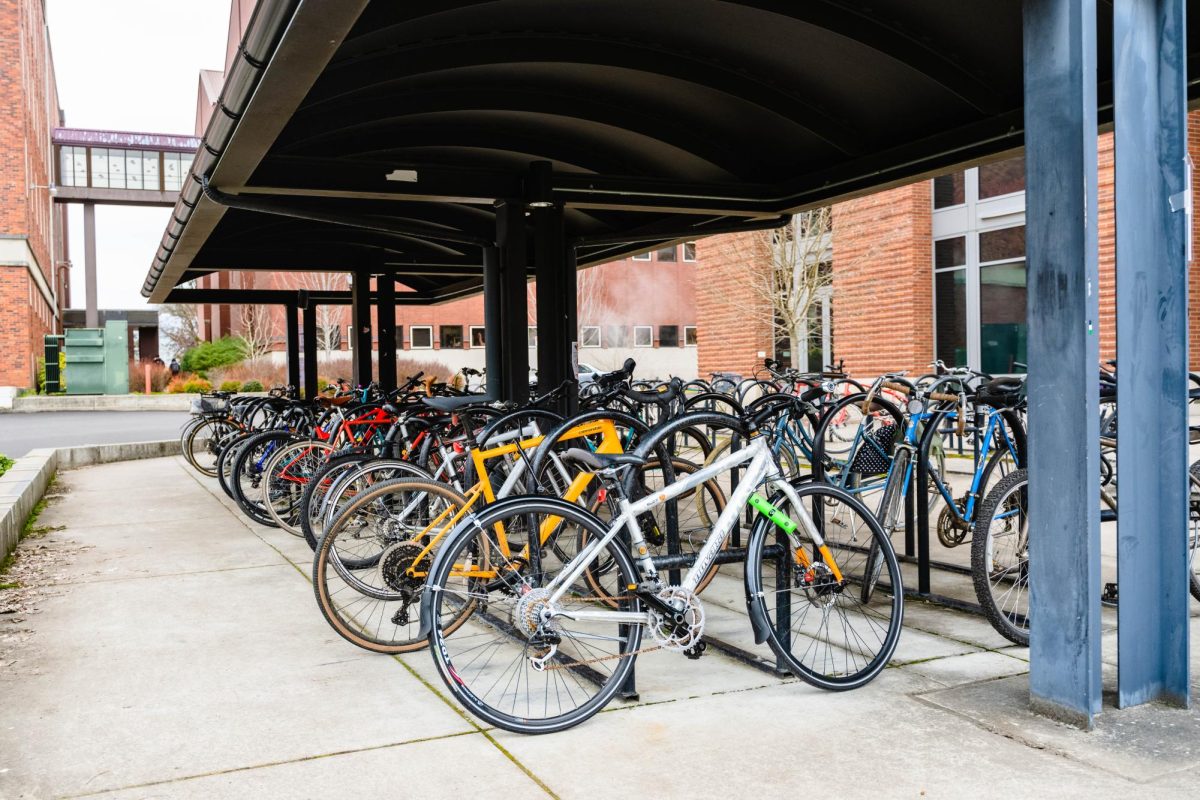Editor’s note: This story was originally published online in truncated form. The full story can be found below.
Corvallis has retained the Gold-level Bicycle Friendly Community designation by the League of American Bicyclists.
This distinction is for the city’s efforts in making biking an accessible, safe and sustainable mode of transportation for its residents.
Lindsey Almarode, active transportation specialist for the City of Corvallis, said the key to Corvallis’ success in achieving gold-level status was its commitment to equity in cycling initiatives.
“We publish our bicycle map and materials for our signature community event, Open Streets Corvallis, in Spanish,” Almarode said.
Additionally, the city has focused on implementing the Neighborhood Bikeway in southeast Corvallis ahead of other projects, due to the area’s lack of active transportation, according to Almarode.
The city has applied for Safe Routes to School project funding for infrastructure at schools in the Title I Federal Education Program in the past.
Title I schools receive federal funding for meeting the needs of educationally at-risk students, according to the program’s website.
Almarode added that the city has created five more miles of buffered bike lanes, constructed the Eric E. Austin Memorial Path in south Corvallis, expanded bike parking throughout the city and added 25 new green bike lane markings at transition zones, all efforts to improve transportation infrastructure in recent years.
Almarode said the infrastructure improvements were made possible through an Active Transportation investment, which was supported by the City Council and will continue through the 2023-2024 fiscal year.
One challenge that the city has faced in expanding biking infrastructure is staffing shortages, which have delayed projects.
The city has focused on creating educational events for people to become more engaged with biking in Corvallis.
“Open Streets Corvallis, our annual street festival that promotes walking, biking and rolling, is the biggest event we organize each year,” Almarode said. “A mile of city streets are closed to vehicles and opened up for people of all ages and abilities to explore. Neighbors and community organizations host activities along the route and at the two parks on either end.”
Other events the city hosts include the Be Bright Pop-Up event and the Get There Challenge. During the Be Bright Pop-up, city workers intercept cyclists and attach front and rear lights onto their bikes. The Get There Challenge is a statewide competition where the city encourages people to drive alone less and use alternative transportation methods such as biking.
“Each year, we demonstrate street projects that center people first, with safety and community in mind,” Almarode said.


















































































![Newspaper clipping from February 25, 1970 in the Daily Barometer showing an article written by Bob Allen, past Barometer Editor. This article was written to spotlight both the student body’s lack of participation with student government at the time in conjunction with their class representatives response. [It’s important to note ASOSU was not structured identically to today’s standards, likely having a president on behalf of each class work together as one entity as opposed to one president representing all classes.]](https://dailybaro.orangemedianetwork.com/wp-content/uploads/2025/03/Screenshot-2025-03-12-1.00.42-PM-e1741811160853.png)
























